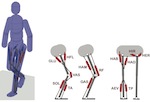
Animating Human Lower Limbs Using Contact-Invariant Optimization
We present a trajectory optimization approach to animating human activities driven by the lower body (e.g., locomotion, jumping, kicking). Our formulation is applied to a physical humanoid model whose lower limbs are actuated by musculotendon units, and does not rely on prior motion data or on task-specific controllers.
Igor Mordatch, University of Washington
Jack M. Wang, Stanford University
Emanuel Todorov, University of Washington
Vladlen Koltun, Stanford University
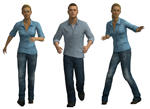
Evaluating the Distinctiveness and Attractiveness of Human Motions on Realistic Virtual Bodies
We conducted a series of perceptual experiments to explore
the distinctiveness and attractiveness of human motions, and
whether characteristic motion features transfer across an individual’s
different gaits. To do this, we captured thirty actors walking, jogging and dancing, and applied their motions to a male or female virtual character.
Ludovic Hoyet, Trinity College Dublin
Kenneth Ryall, Trinity College Dublin, Disney Research
Katja Zibrek, Trinity College Dublin
Hwangpil Park, Seoul National University
Jehee Lee, Seoul National University
Jessica Hodgins, Carnegie Mellon University, Disney Research
Carol O'Sullivan, Trinity College Dublin, Disney Research, Seoul National University
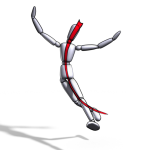
The Line of Action: an Intuitive Interface for Expressive Character Posing
The line of action is a conceptual tool often used by cartoonists and illustrators to help make their figures more consistent and more dramatic. In this paper, we adapt the line of action to 3D virtual character posing.
Martin Guay, Ljk, Université De Grenoble, Institute National de Recherche en Informatique et en Automatique
Marie-Paule Cani, Ljk, Universtié De Grenoble, Institute National de Recherche en Informatique et en Automatique
Rémi Ronfard, Ljk, Université De Grenoble, Institute National de Recherche en Informatique et en Automatique
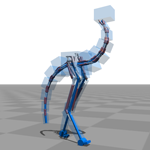
Flexible Muscle-Based Locomotion for Bipedal Creatures
We present a muscle-based control method for simulated bipeds
in which both the muscle routing and control parameters are optimized.
Our control framework supports a wide variety of bipedal creates, finds different gaits based on target speed, copes with uneven terrain and perturbations, and can steer to target directions.
Thomas Geijtenbeek, Utrecht University
Michiel van de Panne, University Of British Columbia
A. Frank van der Stappen, Utrecht University
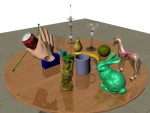
Robust Realtime Physics-based Motion Control for Human Grasping
We present a robust physics-based motion control algorithm for realtime synthesis of human grasping. We demonstrate the power of our approach by generating physics-based motion control for grasping a wide variety of objects with different properties such as shapes, weights, spatial orientations, and frictions.
Wenping Zhao, Texas A&M University
Jianjie Zhang, Texas A&M University
Jianyuan Min, Texas A&M University
Jinxiang Chai, Texas A&M University






